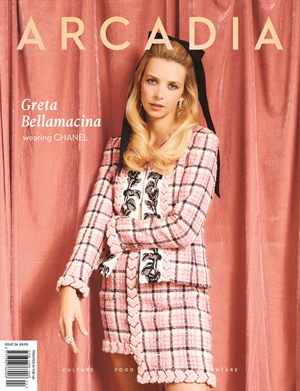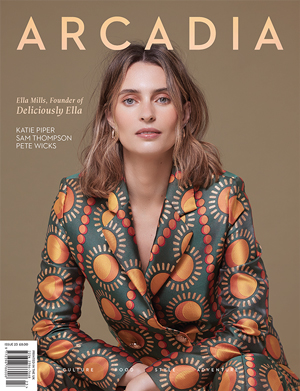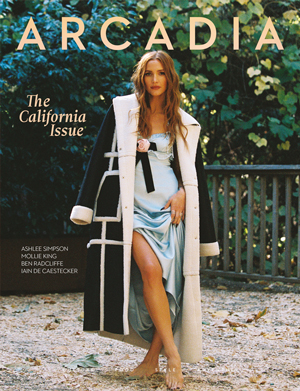Modern homes benefit from thoughtful use of natural materials. Solid wood flooring stands out for adding warmth and balance to sleek, contemporary interiors, a direction embraced by recent interior design trends that favour organic, sustainable elements in minimalist and modern settings. Modern organic styles remain popular.
Oak floors bring a classic look and strong reliability. With different grain patterns and warm colours, oak works with both new and traditional rooms. This makes solid wood flooring a common pick in design-focused homes.
Recent reports on interior trends show herringbone patterns becoming more popular in homes. Designers now use this style in many types of properties, not just historic houses. The zigzag design stands out and turns the floor into a key visual feature. Even plain rooms feel special with herringbone wood, as the pattern brings movement and a touch of elegance.
Why Solid Wood Flooring Creates Timeless Foundations
Solid wood flooring stands out for its ability to last for generations with proper care, sometimes exceeding 100 years, which appeals to those seeking a long-term home investment. Durable, sustainable options are increasingly desirable as trends shift towards eco-friendly living.
Oak, a popular choice, adapts smoothly to changing design updates, making it easy to refresh furniture or accents without needing a new floor. This flexibility means homeowners get both reliability and style, no matter how often tastes shift.
Natural wood helps balance hard surfaces such as glass, metal, or stone. In rooms with lots of contemporary finishes, wood adds needed warmth, preventing spaces from feeling stark. Oak flooring connects traditional and modern designs, working well with everything from minimal schemes to farmhouse looks. This gets results that always feel balanced and current, even when other elements change.
The durability of solid wood floors also supports sustainability as they require fewer replacements over time. Choosing a responsibly sourced wood floor ensures lower environmental impact compared to more processed materials. Many design professionals highlight material longevity and sustainability as key factors for buyers who want homes to adapt and last.
Design Elements That Complement Wooden Floors
Natural light plays a crucial role with wooden floors, revealing the grain and shifting tones as sunlight moves through the space. Large windows or patio doors help achieve this effect, making even compact rooms feel open as the day progresses. Designers often position seating or rugs to capture the best light, ensuring the floor becomes part of the room’s changing mood.
Colours for walls, curtains, and upholstery should relate to the floor’s undertone. Warm oaks blend well with neutrals and soft sage, creating a relaxed look. Darker timbers, such as walnut, align with rich tones or crisp whites, highlighting contrast without overpowering the wood’s character. Instead of matching the floor exactly, designers seek harmony by mixing shades that work together. This avoids a flat or monotonous feel and keeps the space interesting.
Natural fabrics add instant comfort. Wool or cotton rugs not only soften surfaces and make walking more pleasant, but also mark out living zones, reducing footstep sounds on hard flooring. Layering with textured throws or thicker curtains boosts warmth and matches the floor’s tactile appeal. These soft accents complete the room’s look and improve daily comfort.
Contrasting Materials for Balance
Mixing stone, metal, and glass with wood ensures a space feels layered and visually comfortable. In kitchens or bathrooms, stone counters that echo the tone of the floor can visually bridge zones and improve durability. Surfaces like marble, limestone, and slate each have unique patterns; pairing these with wood heightens texture and creates more engaging, tactile spaces, a method widely recommended by designers focused on sensory-rich interiors. Combining materials creates interest.
Blending warm woods with cooler materials lets each finish retain its qualities. For example, brushed metal taps stand out against oak flooring, preventing the area from appearing flat. Glass shelving or tables keep sight lines open and stop the area feeling closed. This gentle material mix lowers the risk of a heavy feel and keeps the space light, making it more inviting and less clinical, an effect that appeals in modern layouts.
Experts suggest using strong and soft materials together instead of relying on formulas. Layering an oak herringbone floor, marble fireplace, and brass lighting helps highlight differences in texture and sheen. The British Institute of Interior Design supports tailoring material and colour combinations for each room’s use and light, prioritising practical comfort over strict ratios.
With material choices clear, the next step is selecting wood styles that fit your design goals, a transition that shows how the right oak flooring keeps balanced spaces cohesive while appealing to many tastes.
Oak Flooring for Diverse Aesthetic Styles
Oak remains the preferred option for solid wood floors thanks to its neutral palette and varied grain patterns, making it practical for any décor, from minimalist flats to rustic cottages. This adaptability is supported by its strong presence in UK renovations and new builds, reflecting the popularity noted by interior trend reports. One reason oak fits so well is its ability to visually link different design eras without locking a home into one look. Designers recommend oak where flexibility across future updates is important.
Beyond looks, oak is dense and holds up under daily use, meaning it keeps shape even where many people walk. Its low seasonal movement helps floors stay even, and its surface resists dents better than softer woods. Oak’s grain comes in gentle or more vivid varieties, letting buyers match it to their taste. Because it stains and finishes easily, it’s a solution for those seeking custom design without needing special materials. Maintenance is also manageable, supporting a balance of style with practical living.
Finishing choices shape oak’s character further. Matte lacquers preserve a pale, relaxed tone popular in Scandinavian settings. Deeper stains or smoked finishes give a stately feel, while brushed or oiled treatments bring out the wood’s warmth and texture, matching insight from leading design publications. Finish variety means oak floors remain relevant as tastes and trends evolve.
Once oak’s visual flexibility and tough performance are clear, the way boards are laid—herringbone, wide plank, or chevron—and textured, affects how the floor shapes space. This links timber choice with creative decisions, so buyers can tailor each floor to match their home and personal style.
Pattern and Texture Considerations
How floorboards are arranged changes the spatial experience. Laying long, straight planks along the room emphasises length, making tight spaces appear more open. Diagonal planks introduce movement and visually widen compact areas, a practical trick in small flats. Designers often use parquet styles like basket weave or chevron for rooms needing an upgrade in formality, as these patterns add precision and detail without requiring extra décor.
Herringbone is increasingly used in both city flats and family homes since it delivers an eye-catching zigzag that doesn’t distract from other furnishings. This layout naturally leads the eye, forging a path that helps spaces—especially long hallways—feel cohesive and thoughtfully designed. In small rooms, herringbone achieves a statement effect that avoids clutter, proving especially useful where minimalism is essential for flow.
Texture is equally influential. A brushed finish highlights wood grain, softening the look and adding comfort underfoot. Hand-scraped boards introduce subtle ridges that play with light, giving rooms a crafted quality. Retained saw marks suggest raw industry, while smooth oiled or lacquered oak creates a polished, modern vibe. Each choice changes how a room feels as daylight moves and can support a restful atmosphere or energise a space depending on the finish.
Modern interiors often blend these patterns and finishes to fit a specific mood. Some lean into the drama of herringbone, others prefer gentle grains and tones. In this approach, solid wood flooring is popular for its adaptability in letting texture, direction, and pattern define a room from quiet and understated to lively and distinctive.
Herringbone Patterns in Modern Contexts
The herringbone pattern continues to gain popularity in both rural and urban interiors, with designers choosing it to introduce order and movement into minimalist or open spaces. The angled layout draws the eye, encouraging a sense of dynamism that works especially well in entryways and open-plan living areas where directing foot traffic matters, as noted by current home design trend reports. Modern organic styles include herringbone to elevate otherwise plain environments.
Recent installations offer more plank widths than historic styles. Older properties relied on slim, tightly placed boards, but now designers use wide planks for a dramatic, contemporary take on the pattern, maintaining visual order within the space. Narrow blocks increase pattern detail and energy, while wide boards simplify the aesthetic, making a bold yet uncluttered floor.
Herringbone also adds texture to minimalist rooms where furniture and decor are sparse, helping to avoid a flat feel. The subtle shifts of light across the angled wood surface give depth, proven to make neutral rooms more engaging without adding extra items. Designers often use this approach in spaces finished with glass or metal to soften lines and bring natural warmth, a practice supported by recent design studies. Herringbone’s organic-modern appeal works especially well when balanced with strong materials.
Practical Considerations for Natural Floor Choices
Maintaining wooden floors is straightforward when using a soft brush for daily sweeping and a slightly damp mop with a recommended wood cleaner. Avoiding excess water preserves the finish and reduces risk of warping, especially in high-traffic areas. Wood floors keep dust levels lower than carpets and don’t collect dirt like grout in tiled floors, which is helpful for allergy management. Most finishes only need routine cleaning, though oiled or waxed types may benefit from an annual refresh to retain their protective layer. Modern lacquers shield the wood from spills and scratches, so maintenance becomes more about light upkeep than heavy tasks.
The lifespan of genuine wood flooring is another core asset. Over the years, the surface develops a patina as colours subtly deepen and high-use spots become smoother. Instead of appearing worn, the grain softens and light marks add visual interest—making the floor unique to each home. These age marks become part of the room’s story, while man-made flooring often shows irreversible wear. This evolving character helps explain why wooden flooring remains a valued choice; many notice that wood floors improve with age and require less intensive care over time.







